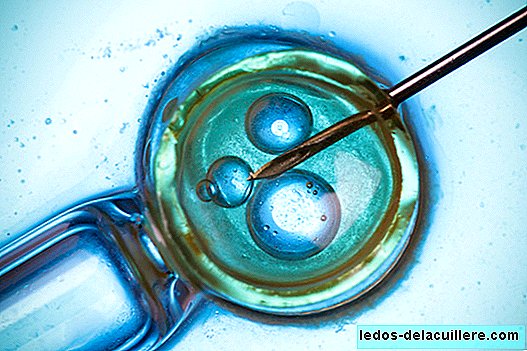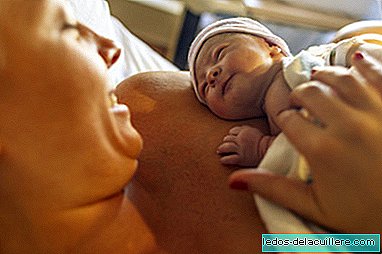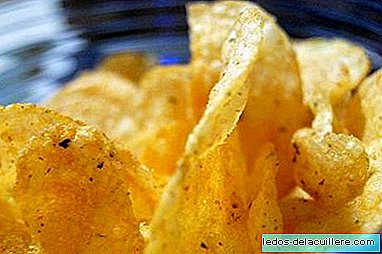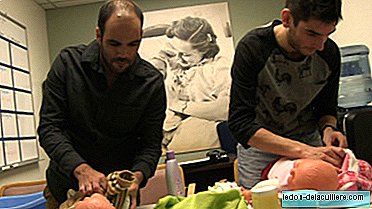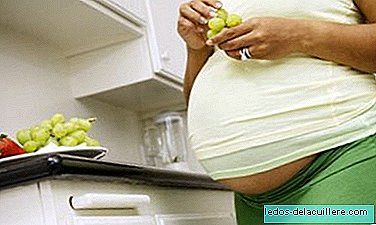
One of the posts that gave me more headaches during my career in this blog has been the one that wondered if mothers were fed properly during breastfeeding. It echoed a study in which certain nutritional deficiencies that, in general, nursing mothers presented (like any other population sector).
The controversy came because one of the data offered by the author, referring to the recommended amounts of iron, was popularly pointed out as a mistake made in the study and took away its validity.
However, investigating a little more, we learned that the data about iron were not wrong, at least not according to the reference values included in the study. So I commented in an update of the post.
Not only did I echo this study and its conclusions, also questioning the controversial data referring to the amount of iron that women should ingest during breastfeeding.
A good part of the maternity-related blogosphere did, although in our case we offered the final explanation we obtained after contacting the author. Something that did not occur in other forums, which continue to consider invalid, when not false or biased, the study in question.
The fact is that following this post I was aware of the large number and variety of nutritional recommendations throughout the planet, established by different organisms and with different methodologies.
This causes, for example, that the recommended "official" iron intake for nursing mothers is 18 milligrams in Spain, in the Nordic countries of 15 milligrams, according to the United States between 9-10 milligrams or according to WHO between 10 and 30 milligrams

There is an interesting document that includes this variety, entitled “Comparison of Dietary Reference Intakes (IDR) of the different countries of the European Union, of the United States (USA) and of the World Health Organization (WHO) “, published in 2009 in the journal“ Hospital nutrition ”.
In it, this heterogeneous panorama is summarized in a clarifying way:
The reference intakes differ markedly among the different countries studied in terms of population groups, type of nutrients included, methodology and periodicity of the published reviews. However, most similarly define the most important concepts, even if they have different denominations in each country. On the other hand, in the majority of the cases studied there is a single scientific body responsible for the publication and updating of the reference dietary intake values, not being in Spain.
In fact, we know that in Spain there are several organizations and societies that have published their own reference values, among which is the Complutense University of Madrid, with two different working groups and successive reviews.
Therefore, within the Spanish Federation of Nutrition, Food and Dietary Societies (FESNAD), a Group of Experts has been created for the elaboration of the “Dietary Reference Intakes (IDR) for the Spanish Population documented and in based on the best current scientific evidence. ”
Waiting for this document, we leave you with some of the recommended dietary intakes during pregnancy and lactation, recording the data referring to folic acid, vitamins A, B and C, calcium, iron, zinc and iodine.

Dietary intakes during pregnancy and lactation in Spain
- During pregnancy: folic acid, 600 mcg; vitamin B, 2.2 mcg; vitamin C 80 mg; vitamin A, 800 mcg; calcium, 600 mg; iron, 18 mg; zinc, 20 mg; iodine +25 micrograms.
- During breastfeeding: folic acid, 500 mcg; vitamin B, 2.6 mcg; vitamin C 85 mg; vitamin A, 1100 mcg; calcium, 700 mg; iron, 18 mg; zinc, 25 mg; iodine +75 micrograms.
Dietary intakes during pregnancy and lactation in Nordic Countries
- During pregnancy: folic acid, 500 mcg; vitamin B, 2 mcg; vitamin C 85 mg; vitamin A, 800 mcg; calcium, 900 mg; iron without data; zinc, 9 mg; iodine, 175 mcg.
- During breastfeeding: folic acid, 500 mcg; vitamin B, 2.6 mcg; vitamin C 100 mg; vitamin A, 1300 mcg; calcium, 900 mg; iron, 15 mg; zinc, 11 mg; iodine, 200 mcg.
Dietary intakes according to WHO
- During pregnancy: folic acid, 600 mcg; vitamin B, 2.6 mcg; vitamin C 55 mg; vitamin A, 800 mcg; calcium, 1200 mg; Iron: It is recommended to give iron supplements to all pregnant women, due to the difficulty in assessing iron deposits in pregnancy. In pregnant women without anemia, 100 mg of iron daily supplementation is considered sufficient in the second half of pregnancy. In pregnant women with anemia, higher doses are required; zinc, between 6-20 mg in the last trimester; iodine 200 mcg.
- During breastfeeding: folic acid, 500 mcg; vitamin B, 2.8 mcg; vitamin C 70 mg; vitamin A, 850 mcg; calcium, 1000 mg; iron, between 10-30 mg (according to bioavailability); zinc, between 5'8 and 19 mg the first three months; iodine 200 mcg.
Dietary intakes in the United States
- During pregnancy: folic acid, 600 mcg; vitamin B, 2.6 mcg; vitamin C 80-85 mg; vitamin A, 750-770 mcg; calcium, 1300-1000 mg; iron, 27 mg; zinc, 12-11 mg; iodine 220 mcg.
- During breastfeeding: folic acid, 500 mcg; vitamin B, 2.8 mcg; vitamin C 110-115 mg; vitamin A, 1200-1300 mcg; calcium, 1300-1000 mg; iron, 10-9 mg; zinc, 13-12 mg; iodine 290 mcg.
As we can see, there is variety in reference values, and that we have only focused on a few countries and WHO. If we look at the tables of the European Union, of Italy, of France ... we will observe more heterogeneous data.
For health during these and the rest of the vital stages, reference values should be unified. The fundamental thing is that during pregnancy and lactation we take care of ourselves with a healthy and varied diet, taking the recommended nutritional supplements, such as folic acid during pregnancy or iodine during breastfeeding.




